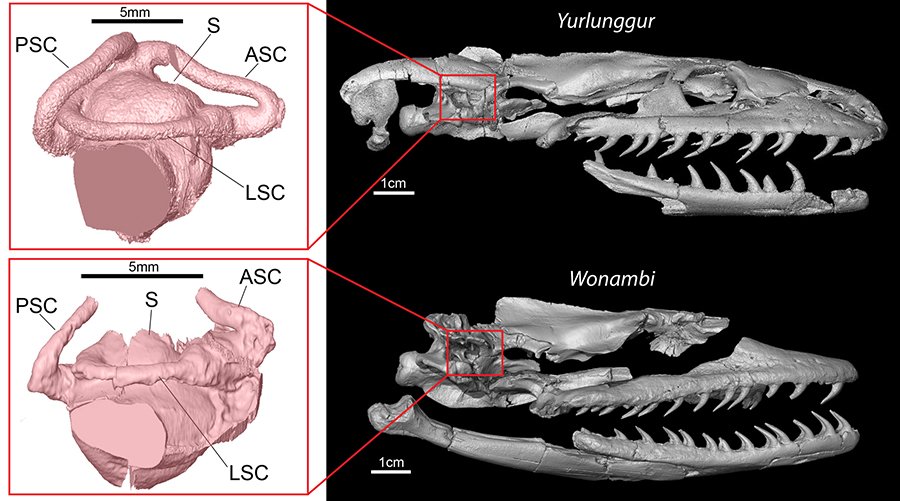Australia’s ancient snakes were swimmers and underground dwellers

A BREAKTHROUGH study by Australian researchers has shed light on the previously unknown behaviours of two of Australia’s ancient snakes.
The 23 million-year-old Yurlunggur from northern Australia and much younger Wonambi of southern Australia, which went extinct only 50, 000 years ago, belong to an ancient lineage that can be traced to the time of the dinosaurs over 100 million years ago.
A team of researchers from Flinders University used high resolution scanning techniques to create models of the ancient snakes’ skulls and inner ears. This process took hundreds of x-rays of two snake fossils from different angles to construct 3D models.
Author of the study Dr Alessandro Palci told Australian Geographic that this new information sheds light on an ancient mystery.
“The study can provide clues to what the earliest snakes looked like, and a better understanding of their lifestyle can shed light on questions related to the origin of snakes,” said Dr Palci.
“While we know that snakes evolved from lizards after obtaining a very long body and losing their limbs, nobody knows yet what kind of ecology led to their body shape. Some argue they evolved as eel-like swimmers, others as worm-like burrowers.”

Digital models of the inner ear labyrinths of the fossil snakes Yurlunggur and Wonambi. (Image Credit: Alessandro Palci)
The ancient lifestyles of Yurlunggur and Wonambi
According to Dr Palci there’s a lot we can learn from a snake’s ears.
“Apart from being responsible for hearing, the inner ear is also responsible for balance and orientation. There is a correlation between the shape of the inner ear and the lifestyle of an animal – whether its head is mostly kept above ground, underground or in the water.”
By comparing skull and inner ear shape to those of living snakes and lizards, the researchers were able to see what kind of lifestyle these ancient snakes led.
Dr Palci found that Yurlunggur was partly adapted to both swimming and burrowing underground, while Wonambi was less specialised in its lifestyle, and more at ease in cooler and drier habitats.
“Before this study was conducted we knew nothing of the possible lifestyles of Yurlunggur and Wonambi. We now certainly have a better idea of what these snakes may have looked like and how they lived.”
The research was published in The Royal Society.
READ MORE:
- Everything you need to know about snakes
- The twists and turns in snake evolution
- Australia’s 10 most dangerous snakes




